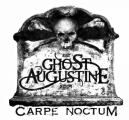Myths & Legends Part 5
Brown Mountain Lights
Although the mysterious lights have been observed by local Native American tribes for hundreds of years, the earliest sighting by a European seems to be from a surveyor of the area, Gerard Will de Brahm, in 1771. He tried to explain the phenomenon as a “nitrous vapor” which “inflames, sulphurates and deteriorates.” One early account dates from September 13, 1913, as reported in the Charlotte Daily Observer. A fisherman claimed to have seen “mysterious lights seen just above the horizon every night” red in color, with a pronounced circular shape. Rather soon after this account, a US Geological Survey employee, D.B. Stewart, studied the area in question and determined the witnesses had mistaken train lights for something more mysterious reports of odd lights continued, and a more formal USGS survey began in 1922, under the direction of George Rogers Mansfield. He determined witnesses had misidentified automobile or train lights, fires, or mundane stationary lights. However, this does not explain the fact that the lights had been observed long before the advent of automobiles, trains or electricity in general. In later decades, reports of the Brown Mountain Lights continued. An experiment conducted in 1977 shone a 50,000 candela floodlight 22 miles (35 km) towards Brown Mountain. Experimenters saw a red, circular light floating above the horizon, and thus concluded that refraction of ordinary lights were likely to blame for the Brown Mountain Lights.
Research on the phenomenon has been conducted by paranormal researcher Joshua P. Warren and the League of Energy Materialization and Unexplained phenomena Research based in Asheville, NC. They say that after fifteen years of field research working with a wide variety of scientists, they concluded that the lights are caused by natural plasmas produced by special geologic and atmospheric conditions of the mountain. According to their interpretation, conductive and non-conductive layers of the mountain (such as magnetite and quartz) store electric charge when water runs through tunnels in the ridge. At night, when the rocks cool and contract, these layers squeeze together causing massive discharges. Sometimes multiple discharges intersect and spin fast enough to be observed in the visible electromagnetic spectrum, causing the illusion of a self-contained sphere of light at the point of intersection.
